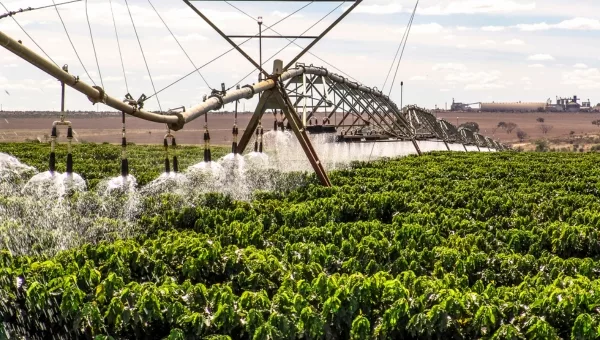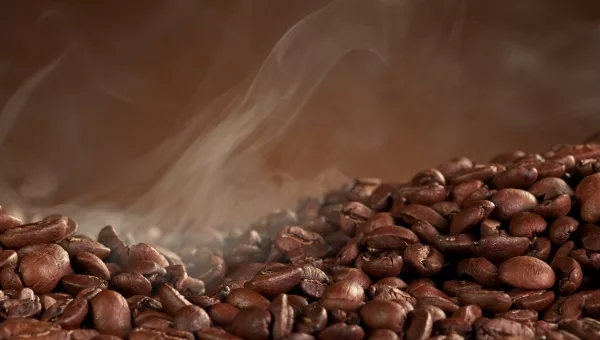
Water World Day: water and coffee, an inseparable duo
In the vast world of coffee, where the nuances of flavor stretch like the hues of a sunrise, there’s an often overlooked but essential companion: water. Water and coffee share a deep and complex relationship, a symbiosis where every drop of water plays a crucial role in creating that perfect cup. Today, on World Water Day, let’s delve into the depths of this relationship, explore how water quality influences the taste of your coffee, and examine the inseparable link between water and coffee culture.
Water: the foundation of coffee art
In the quest for the perfect cup of coffee, many people focus on the choice of beans, the roasting process, and even the equipment used for extraction. However, one element that is often underestimated is the water itself. In fact, water makes up around 98% of your cup of coffee. So it has a major impact on the final result.
Imagine, if you will, a painting palette, where each color represents a nuance of flavor in your coffee. Now imagine pouring impure water over this palette. The colors would blend and fade, and the beauty of the work would be compromised. In the same way, poor-quality water can dull the subtle aromas and flavors of coffee, leaving a cup bland and insipid.
CHEMICAL COMPOSITION AND INFLUENCE ON EXTRACTION
Water doesn’t just carry the flavours of the coffee beans into your cup. Its chemical composition also plays a crucial role in the extraction process. For example, the pH of water can affect the extraction of acidic and basic compounds present in coffee beans. Slightly acidic water can favor the extraction of acidic aromas, while alkaline water can enhance the coffee’s sweet, complex flavors.
Similarly, water hardness, determined by its content of minerals such as calcium and magnesium, influences the extraction of soluble coffee compounds. Water that’s too hard can lead to over-extraction, producing a bitter, astringent coffee, while water that’s too soft may not extract enough flavor, leaving the coffee bland and underdeveloped.
SOLVENT CAPACITY AND ROLE IN BREWING
Water acts as a solvent during the brewing process, extracting aromatic compounds, oils and acids from the ground coffee. This solvent capacity depends on the chemical composition of the water, in particular its dissolved mineral content. Minerals act as catalysts, facilitating the extraction of soluble coffee compounds.
Mineral ions present in water interact with coffee molecules to form soluble complexes that contribute to coffee’s flavor, aroma and texture. For example, calcium can bind to the chlorogenic acids present in coffee to reduce their perceived bitterness, while magnesium can enhance coffee’s fruity and floral aromas.
In short, the chemical composition of water plays an essential role in coffee brewing, directly influencing the quality, flavor and aroma of the final beverage. By choosing the right quality water for your coffee, you can enhance your tasting experience by bringing out the subtle nuances and complex flavor profiles of your favorite beans.
IMPACT ON COFFEE QUALITY
The water used in coffee growing and processing plays a crucial role in determining the coffee’s final quality. The composition of water, in particular its content of minerals and other compounds, can significantly influence the taste, aroma and texture of coffee.
-
Influence of minerals on flavour
Minerals present in water, such as calcium, magnesium, potassium and sodium, can modify the flavor of coffee by interacting with the aromatic compounds and acids present in coffee beans. Here’s how certain minerals can influence coffee flavor :
-
- Calcium :
- Calcium can soften the perceived acidity of coffee by binding to chlorogenic acids, reducing perceived bitterness.
- In appropriate quantities, calcium can contribute to a richer texture and creamier mouthfeel in coffee.
- Magnesium :
- Magnesium can enhance the fruity and floral flavors of coffee, adding an extra dimension to its aromatic complexity.
- However, excessive levels of magnesium can lead to excessive bitterness or metallic notes in coffee.
- Potassium :
- Potassium can add a subtle sweetness and silky mouthfeel to coffee, improving its texture and overall balance.
- However, high levels of potassium can sometimes mask coffee’s more subtle flavor nuances.
- Sodium :
- In moderate amounts, sodium can enhance the perception of sweet flavors in coffee, thus balancing its flavor profile.
- However, high concentrations of sodium can give coffee a salty or unpleasant taste.
- Calcium :
In short, the presence and concentration of minerals in the water used to make coffee can have a significant impact on its taste, aroma and texture. By understanding how these minerals interact with coffee compounds, it is possible to adjust water composition to optimize the coffee tasting experience.
The inseparable link between water and coffee growing
INFLUENCE ON COFFEE BEAN GROWTH
The relationship between water and coffee is not limited to the cup. It also extends to coffee plantations around the world. Water is a vital element in the growth and development of coffee beans, directly influencing their quality and flavor.
-
Water requirements of coffee plants
Coffee plants have specific water requirements throughout their life cycle. During the growing season, coffee plants need adequate water to support vegetative growth, flowering and cherry development.
-
Water’s role in photosynthesis
Water is also necessary for photosynthesis, the process by which coffee plants produce energy from sunlight. Sufficient water is essential for the leaves of coffee plants to absorb sunlight and convert carbon dioxide into sugars and carbohydrates.
IMPORTANCE OF WATER SUPPLY
A reliable and adequate water supply is crucial to the success of coffee plantations. Coffee-growing regions often rely on natural rainfall to irrigate their crops. However, in areas where rainfall is irregular or insufficient, irrigation systems may be necessary to maintain the health of coffee plants.
-
Irrigation management
Efficient irrigation management is essential to maximize the yield and quality of coffee harvests. Poorly planned irrigation can lead to water wastage, overexploitation of local water resources and negative environmental impacts such as deforestation and soil degradation.
RISKS ASSOCIATED WITH EXCESS OR SHORTAGE OF WATER
Both excess and shortage of water can have harmful consequences for the health of coffee plants and the quality of the harvest.
-
Risks of water shortage
A shortage of water can lead to water stress in coffee plants, resulting in slower growth, reduced flowering and lower quality and quantity of coffee cherries. In extreme cases, prolonged drought can even lead to the death of coffee plants.
-
Risks of excess water
On the other hand, excess water can lead to problems such as root rot, the development of fungal diseases and the leaching of nutrients from the soil. Poor irrigation management can also contribute to soil erosion and water pollution, damaging the health of local ecosystems.
The impact of water on the taste of coffee
Imagine making your morning coffee. You carefully select your compostable coffee capsule, place it in your coffee machine, and press the button. But have you ever taken the time to consider the water that runs through your machine? This often overlooked water plays a crucial role in the coffee extraction process.
The quality of the water used to prepare your coffee can have a significant impact on its final taste. Water transports the coffee’s aromatic compounds and acts as a catalyst in the extraction process. Clean, well-balanced water allows the coffee’s natural aromas to express themselves fully, creating an incomparable sensory experience.
Water is much more than just a solvent; its chemical composition, hardness, pH and even taste influence the way it interacts with the coffee beans. Water that’s too hard can alter the coffee’s delicate flavours, while water that’s too soft can produce a bland, insipid coffee. That’s why at Kabioca, we’ve made water quality a top priority.
FINDING THE RIGHT BALANCE
Striking the right balance in terms of water chemistry is essential to achieving a perfectly balanced coffee flavor. However, this balance can vary according to individual preferences and the characteristics of the coffee used. Here are some important considerations for finding this balance:
-
Water hardness
Water hardness, determined by its content of minerals such as calcium and magnesium, can influence the taste of coffee. Water that’s too hard can give the coffee a bitter, harsh taste, while water that’s too soft can make it bland and dull. Finding the right balance between water that is too hard and water that is too soft may require the use of filters or water softeners to adjust the water’s chemical composition.
-
Water pH
Water pH can also affect the taste of coffee by influencing the extraction of aromatic compounds and acids from coffee. A slightly acidic pH can favor the extraction of acidic aromas, while an alkaline pH can
-
Chloride content
As mentioned above, the chloride content in water can influence the perceived bitterness of coffee. Finding the right balance of chloride can help to attenuate or enhance coffee bitterness according to individual preferences.
By adjusting these factors and experimenting with different water compositions, it’s possible to find the right balance that enhances the unique characteristics of each coffee and delivers an optimal tasting experience. Ultimately, the quality of the water used to brew coffee is just as important as the quality of the coffee beans themselves.
In the complex and fascinating world of coffee, water is much more than a simple ingredient. It is the canvas on which coffee’s flavors unfold, the medium through which the art of roasting and brewing comes to life. On this World Water Day, let’s take a moment to appreciate this intimate relationship between water and coffee, and to recognize the importance of water quality in creating a truly exceptional cup of coffee.



